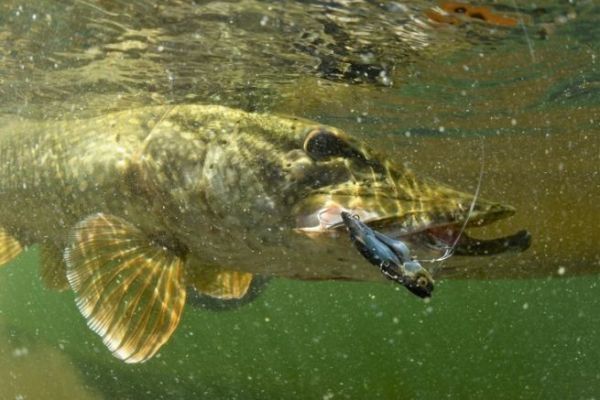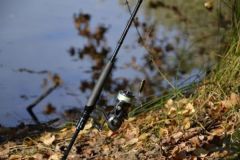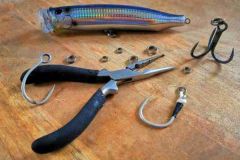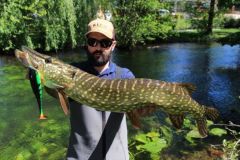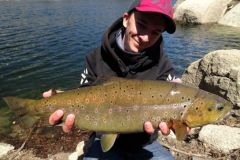Small fish from big fish
Lure fishing is characterized by offering predatory fish a number of stimuli: visual, vibratory, sound (I deliberately differentiate between the perception of sound and the perception of water pressure), water displacement and olfactory, which will trigger an attack reflex in the predator, whether feeding or aggressive.
Some well-known approaches play on strong water placements and strong visual presence, while offering a big bite to predators.
This is big baiting. The stimulation for the predator is twofold: easily spot what it thinks is prey and generate an attack on this irresistible big bite.
Conversely, for wary, educated fish, we'll minimize the presence and stimuli of the lure by reducing the size of the imitation, making it more natural in the eyes of carnivores wary of the strong, unnatural stimuli they've already encountered.
At the crossroads of all this, there is finally a tactic that takes up a little of all this and allows you to flush out active fish of all sizes: fish small but powerful.
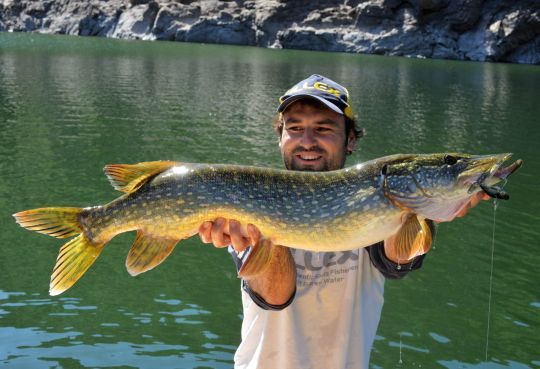
Why fish small?
We're talking about lures measuring between 3 and 7 cm only! Unusual sizes for pike, catfish, pike-perch or even black-bass. These are compact lures that can be used on any medium-light to medium-heavy combo.
These lures don't fall into any particular category, and you'll see that we're mainly looking for lures with a big presence. These lures will be "stimulating", i.e. they will stand out from a distance, without being bulky. Their presence will manifest itself through strong visual stimuli (reflection, strong movements) and, above all, vibratory stimuli!
These compact lures include crankbaits, blades, tailspinners and soft lures. These lures are ideal for powerfishing for prospecting, but are also attractive to any predator, even large ones.
In addition to the fact that all predators at some stage in their lives focus on small prey, the strong stimuli and signals coupled with a compact lure also appeal to large predators: from metre-high pike to 50 cm black bass, aged chub or 45 cm perch...
The attack mechanism of these large predators is not necessarily alimentary. They are not looking for rich, nourishing and abundant prey, but may attack out of aggression and reflex (a trait of all predators) to "punish" a disturbing intruder in response to a set of stimuli.

To sum up, the predator doesn't react by attacking potential prey, but by attacking a set of stimuli that generates an attack reaction in him!
All species, at least a maximum, regardless of size, from 20 m perch to 2 m catfish, can be targeted.
Understanding stimuli
It's important to remember a fundamental principle of lure fishing: what makes a fish attack (or not) a lure. From this reflection we can learn and play on the stimuli provoked by the lure rather than by its size, color, resemblance to prey... The ultimate aim is to generate a response and reaction in the form of an attack in predators, whether large or small.
Our lures are not bait, live or dead food, but artificial, made of wood, polymer, metal... so what makes a fish attack our lure? It's the way we perceive it, through our senses, whether visually, through its vibrations, the amount of water it moves, its smell or the sounds it emits. These signals constitute a set of stimuli.
Visit behavioral psychology a stimulus is a modification of the environment or the body whose intensity is sufficient to provoke a physical or psychological reaction.
To be effective, the stimulation must be long and powerful enough to provoke a response in the organism (in this case, the fish). The mechanism leading to the triggering of the attack can be broken down into 3 phases:
- Receiving information at the sensory level (visual, tactile, auditory, gustatory, olfactory);
- Transformation into nerve impulses ;
- Appropriate response by nerve centers.
Stimuli can be light, electrical, mechanical, chemical or thermal. Depending on their intensity, they arouse the nervous and muscular systems, which in turn generate behaviour in response to the stimulus in question. In lure fishing, we mainly use visual, mechanical (waves, pressure variation) and chemical (attractant, lure scent) stimuli.
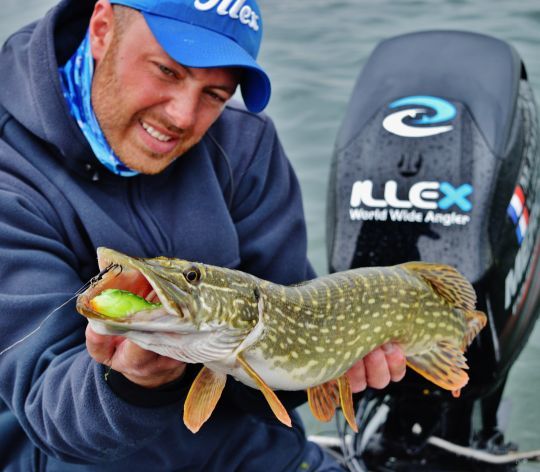
Single or complex stimuli (a combination of several stimuli) generate an almost automatic reaction, which may be physical or psychological. In other words, the more stimulating a lure, the more likely it is to trigger an attack. This is particularly true for untrained fish. Because stimulus, or the direct reactions it provokes, also generates learning in fish and all living creatures. This is why some fish no longer react to certain stimuli that are associated with danger rather than a possible source of food.
The game for the angler in this case is to provoke an attack, whether the fish is large or small, without distinction. To do this, you'll use stimulating lures. Without really talking about powerfishing (prospecting to find active fish), we'd rather talk about reaction fishing. Prospecting can be slow or very slow.
Fishing action
Whether you're prospecting a wide expanse of water or a very small spot, the aim is the same: to generate a reflex strike by offering strong stimuli. We're not necessarily looking for big fish, we're looking for an attack from a receptive fish. So don't hesitate to animate your small lure wherever you suspect the presence of a predator.
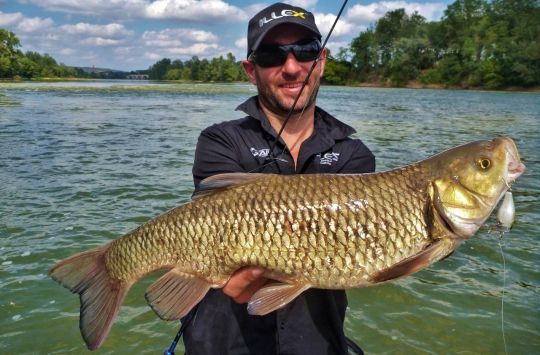
If it's receptive, it won't take long to reflex-attack your lure. This is a playful and highly effective approach that is sure to attract a wide range of predators. It's very interesting to fish in this way on unknown stretches of water, so as to quickly find active fish and identify the species present.
It's also a strategy that's easy to implement and pays off for the simple beginner, or in competition, allowing you to find the active species of the day and the big fish, fishing with almost just one lure and combo.
From a tackle point of view, the ideal is to use small lures generating strong stimuli and having a big presence. On the rod side, a 2.10 m fast action medium with a size 3000 intermediate ratio reel will do the trick. It's that simple!
